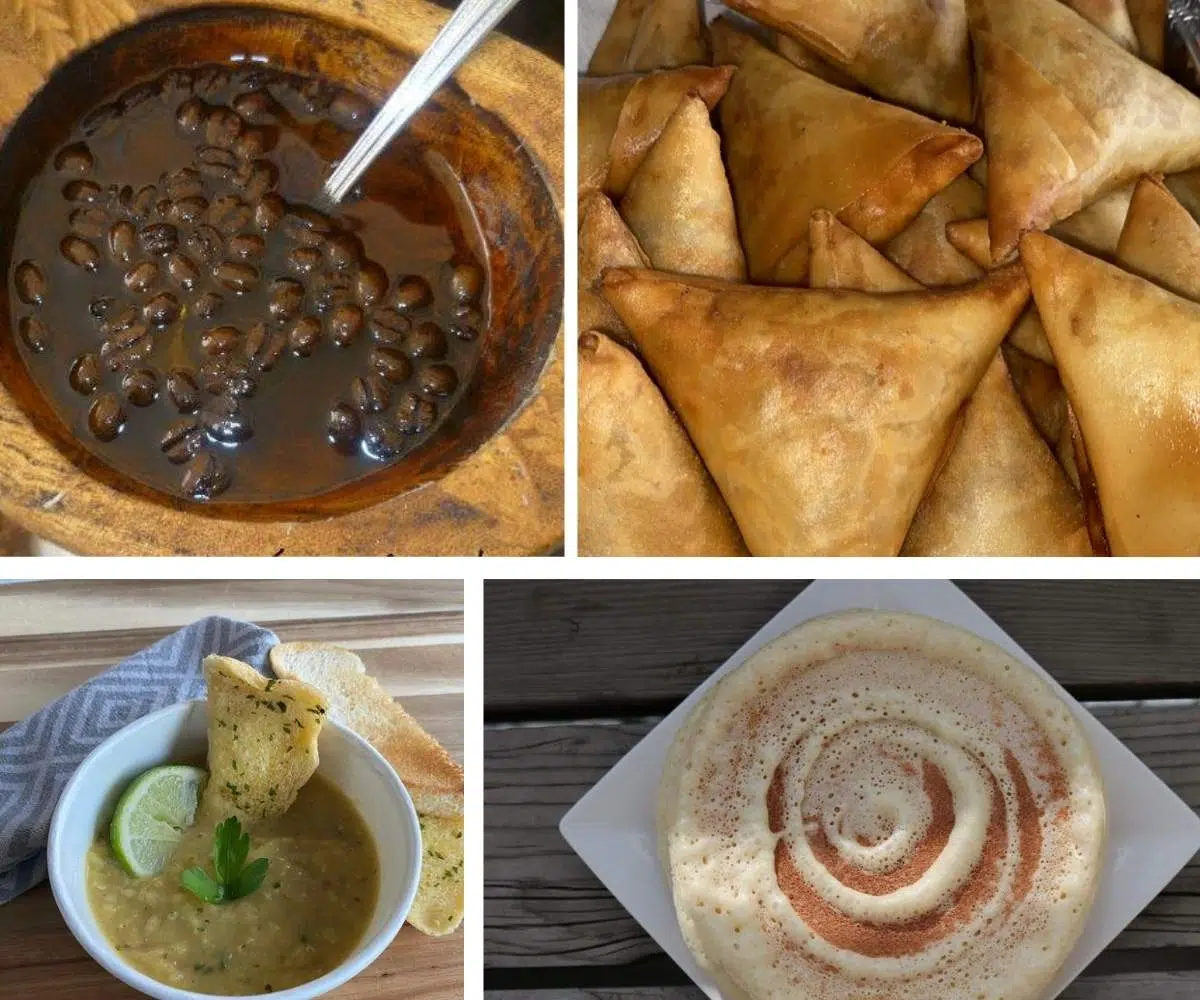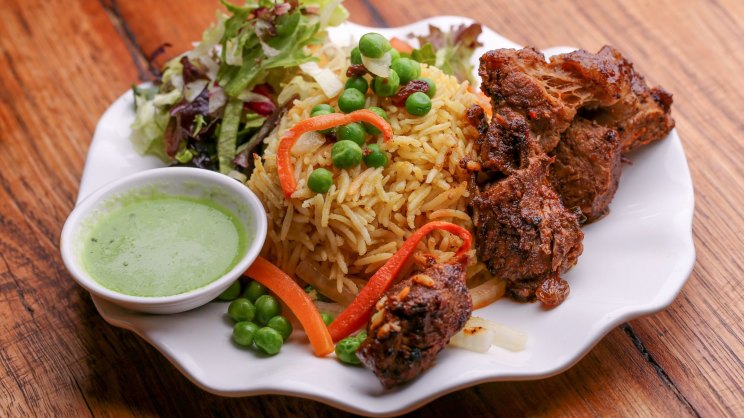Savoring the One-of-a-kind Tastes and Flavors of Somali Gastronomy: a Journey Through the Land of Spices and Saffron

Aromatic Spices and Saffron
Somali cuisine is recognized for its vibrant and savory dishes, which are attained through the skillful usage of fragrant flavors (Somali food). These aromatic flavors are utilized in both modern and standard Somali recipes, producing a distinct and unforgettable flavor profile.
Among the most treasured flavors in Somali cuisine is saffron. Recognized for its lively color and unique aroma, saffron is frequently made use of to raise and enhance the tastes of Somali recipes. Whether it's sprinkled on rice pilaf, instilled in hot tea, or made use of in stews and curries, saffron includes a touch of deluxe to Somali gastronomy.
In addition to their culinary importance, these fragrant seasonings and saffron also hold social value in Somali cuisine. They are used in standard events and celebrations, representing warmth, hospitality, and the splendor of Somali society.
Typical Somali Dishes
Check out the delicious variety of typical Somali recipes that will carry you to a globe of vibrant flavors and social richness. Somali food is a fascinating combination of African, Center Eastern, and Indian influences, leading to a special culinary experience. One renowned dish is the Somali rice, referred to as "Bariis." Fragrant basmati rice is cooked with fragrant seasonings, such as cardamom, cinnamon, and cloves, providing it a cozy and welcoming scent. One more must-try recipe is "Suqaar," a stir-fry of softened meat or hen, onions, garlic, and a collection of flavors. The meat is cooked till it is delicious and breaking with taste. For those seeking a vegetarian option, "Iskudhehkaris" is a delightful option. This dish includes a combination of potatoes, carrots, peas, and rice, prepared in a tasty tomato-based sauce. Somali food likewise flaunts tasty flatbreads, such as "Canjeero" and "Injera," which are best for scooping up stews and sauces. Finally, no Somali dish is total without a mug of spiced tea, referred to as "Shaah." It is made with black tea leaves, cardamom shucks, cinnamon sticks, and a touch of cloves, creating a comforting and warm drink. Get started on a culinary experience and savor the rich and varied tastes of traditional Somali meals.
Impacts From Arab and Indian Cuisine
Immerse yourself in the lively tastes of Somali gastronomy as you find the rich influences from Arab and Indian cuisine. Somali cuisine has been shaped by centuries of trade and cultural exchange with Arab and Indian vendors. These impacts can be seen in the diverse spices, tastes, and food preparation techniques made use of in Somali recipes.
Arab food has had a significant effect on Somali gastronomy. Somali dishes frequently include active ingredients such as cardamom, cinnamon, cloves, and saffron that are frequently utilized in Arab cooking. Using these seasonings includes deepness and complexity to Somali recipes, producing a distinct taste account.
Somali meals frequently include spices such as coriander, cumin, and turmeric, which are typically utilized in Indian food preparation. These flavors not just add taste yet additionally offer Somali dishes their vibrant colors.
Along with seasonings, Arab and Indian cooking strategies have likewise influenced Somali cooking. The concept of slow-moving food preparation or marinating meat in spices prior to grilling, called "maraq," is believed to have actually originated from Arab food. The usage of flatbreads, like "canjeero," which is comparable to Indian dosa, can be traced back to Indian cooking customs.
The influences from Arab and Indian food have actually added deepness and complexity to Somali gastronomy. These impacts have not only formed the tastes and components used in Somali dishes yet have actually likewise added to the social identity of Somali food. So, as you start your culinary journey More Bonuses through Somali gastronomy, be prepared to savor the one-of-a-kind tastes and tastes that have been affected by Arab and Indian cuisine.

Exploring Regional Flavors
As you look into the diverse culinary landscape of Somali gastronomy, a wide variety of local tastes awaits your taste. Each area in Somalia boasts its own special active ingredients, cooking techniques, and taste mixes that add depth and range to the country's cuisine.
In the northern region of Somalia, you will discover flavors influenced by the nomadic way of living and closeness to the Gulf of Aden. Here, camel meat takes facility phase, prepared in a selection of ways, consisting of marination in an array of spices and slow-cooking. The usage of dried fruits, such as figs and days, improves the splendor of recipes, while the seaside influence brings an abundance of fish and shellfish to the table.
In the main area, the cuisine is characterized by hearty dishes that mirror the agricultural heritage of the location. Millet and sorghum are standard grains, utilized to make breads like injera and canjeero. Stews made with goat meat, vegetables, and aromatic spices like cumin and coriander are usual and give a burst of flavors.
Relocating in the direction of the southern area, you will come across a fusion of flavors influenced by the Bantu people and the Indian Ocean profession routes. Coconut milk, tropical fruits, and fragrant flavors like cardamom and cloves are made use of liberally in meals, creating a vivid and one-of-a-kind taste account.
Discovering local tastes in Somali gastronomy permits you to experience the diverse cultural impacts that have actually shaped the country's food. From the nomadic tastes of the north to the farming heartiness of the main area and the seaside fusion of the south, each bite tells a story of tradition, heritage, and the vibrant tapestry of Somali gastronomy.
Exquisite Desserts and Beverages
Delight in the tantalizing flavors of Somali gastronomy via a fascinating selection of treats and beverages that showcase the abundant cultural heritage of click this site the nation. Somali desserts are a true delight for the detects, providing a perfect blend of sweetness and unique tastes. One popular dessert is Kac Kac, a deep-fried pastry made with sugar, flour, and cardamom.
When it pertains to drinks, Somali food provides a revitalizing option of drinks that enhance the flavors of the desserts. A must-try is Shaah, a traditional spiced tea made with black tea leaves, cardamom, cloves, and cinnamon. The fragrant mix of spices develops a soothing and cozy drink that is commonly delighted in with a side of biscuits or click here to find out more days. For a more cooling alternative, Somali people take pleasure in Qaxwo, a refreshing yogurt-based drink flavored with fruits such as banana, strawberry, or mango. Its creamy and appetizing preference provides an excellent balance to the sweetness of the desserts (Somali food).
Verdict
So next time you're in the state of mind to explore new tastes and spices, make certain to add Somali gastronomy to your listing. From the fragrant spices and saffron to the standard recipes influenced by Arab and Indian cuisines, there is something delicious and distinct for everybody to appreciate.
From aromatic flavors to typical dishes influenced by Arab and Indian cuisine, Somali gastronomy is a wonderful blend of tastes. These impacts can be seen in the diverse seasonings, flavors, and food preparation strategies made use of in Somali recipes.

These spices not just include taste yet additionally offer Somali recipes their vivid shades (Somali food). These influences have not only formed the tastes and components used in Somali dishes yet have actually additionally added to the cultural identification of Somali food